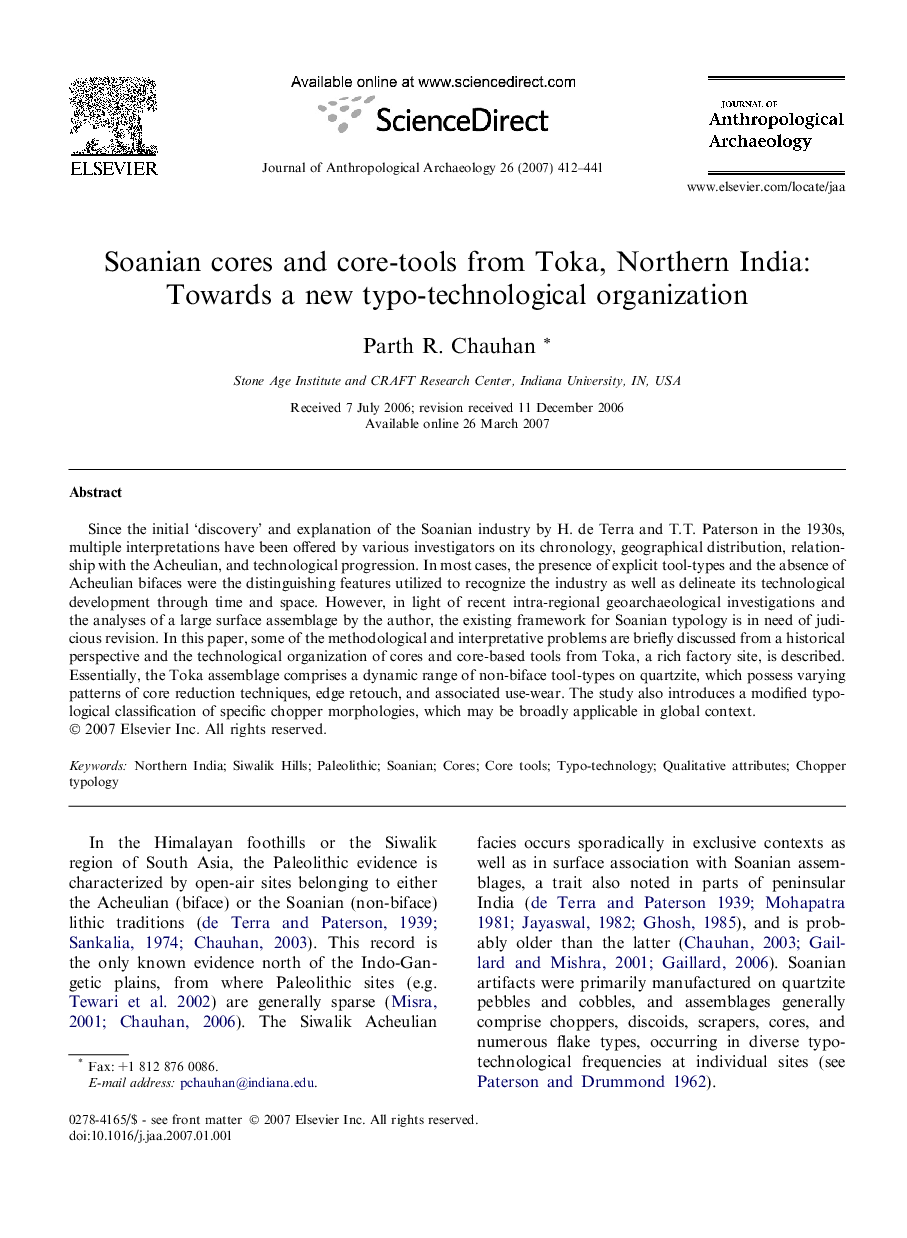| Article ID | Journal | Published Year | Pages | File Type |
|---|---|---|---|---|
| 1035248 | Journal of Anthropological Archaeology | 2007 | 30 Pages |
Since the initial ‘discovery’ and explanation of the Soanian industry by H. de Terra and T.T. Paterson in the 1930s, multiple interpretations have been offered by various investigators on its chronology, geographical distribution, relationship with the Acheulian, and technological progression. In most cases, the presence of explicit tool-types and the absence of Acheulian bifaces were the distinguishing features utilized to recognize the industry as well as delineate its technological development through time and space. However, in light of recent intra-regional geoarchaeological investigations and the analyses of a large surface assemblage by the author, the existing framework for Soanian typology is in need of judicious revision. In this paper, some of the methodological and interpretative problems are briefly discussed from a historical perspective and the technological organization of cores and core-based tools from Toka, a rich factory site, is described. Essentially, the Toka assemblage comprises a dynamic range of non-biface tool-types on quartzite, which possess varying patterns of core reduction techniques, edge retouch, and associated use-wear. The study also introduces a modified typological classification of specific chopper morphologies, which may be broadly applicable in global context.
